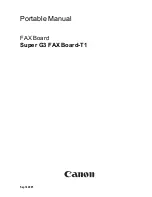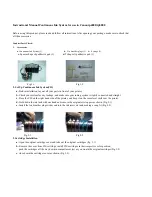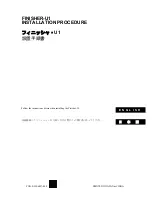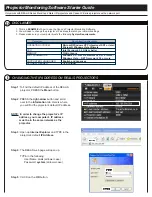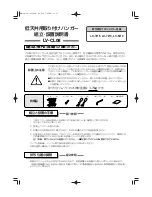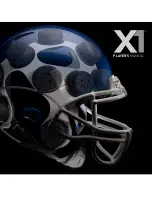
2
SRF-M97
TABLE OF CONTENTS
1.
GENERAL
...................................................................
3
2.
DISASSEMBLY
2-1.
Disassembly Flow ...........................................................
4
2-2.
MAIN Board, Cabinet (Front) Assy ................................
4
2-3.
Side Panel Section, Cabinet (Rear) Assy .........................
5
2-4.
AMP Board ......................................................................
5
3.
ELECTRICAL ADJUSTMENTS
.........................
6
4.
DIAGRAMS
.................................................................
8
4-1.
Schematic Diagram .........................................................
9
4-2.
Printed Wiring Board – MAIN Board – .......................... 10
4-3.
Printed Wiring Board – AMP Board – ............................ 11
5.
EXPLODED VIEWS
5-1.
Cabinet (Front) Section ................................................... 14
5-2.
Cabinet (Rear) Section .................................................... 15
6.
ELECTRICAL PARTS LIST
................................ 16
Notes on chip component replacement
•
Never reuse a disconnected chip component.
•
Notice that the minus side of a tantalum capacitor may be
damaged by heat.
Flexible Circuit Board Repairing
•
Keep the temperature of the soldering iron around 270 ˚C
during repairing.
•
Do not touch the soldering iron on the same conductor of the
circuit board (within 3 times).
•
Be careful not to apply force on the conductor when soldering
or unsoldering.
UNLEADED SOLDER
Boards requiring use of unleaded solder are printed with the lead-
free mark (LF) indicating the solder contains no lead.
(Caution: Some printed circuit boards may not come printed with
the lead free mark due to their particular size)
: LEAD FREE MARK
Unleaded solder has the following characteristics.
•
Unleaded solder melts at a temperature about 40
°
C higher
than ordinary solder.
Ordinary soldering irons can be used but the iron tip has to be
applied to the solder joint for a slightly longer time.
Soldering irons using a temperature regulator should be set to
about 350
°
C.
Caution: The printed pattern (copper foil) may peel away if
the heated tip is applied for too long, so be careful!
•
Strong viscosity
Unleaded solder is more viscou-s (sticky, less prone to flow)
than ordinary solder so use caution not to let solder bridges
occur such as on IC pins, etc.
•
Usable with ordinary solder
It is best to use only unleaded solder but unleaded solder may
also be added to ordinary solder.


















